Last Updated on October 24, 2020
Meghalaya – the abode of the clouds, the home to the sacred forests, the land of the cleanest and the wettest villages, the longest caves … the list goes on. But, somewhere inside the forests of Meghalaya, in one of the wettest places on earth, bridges are not built, they are grown – they are known as the living root bridges of Meghalaya.
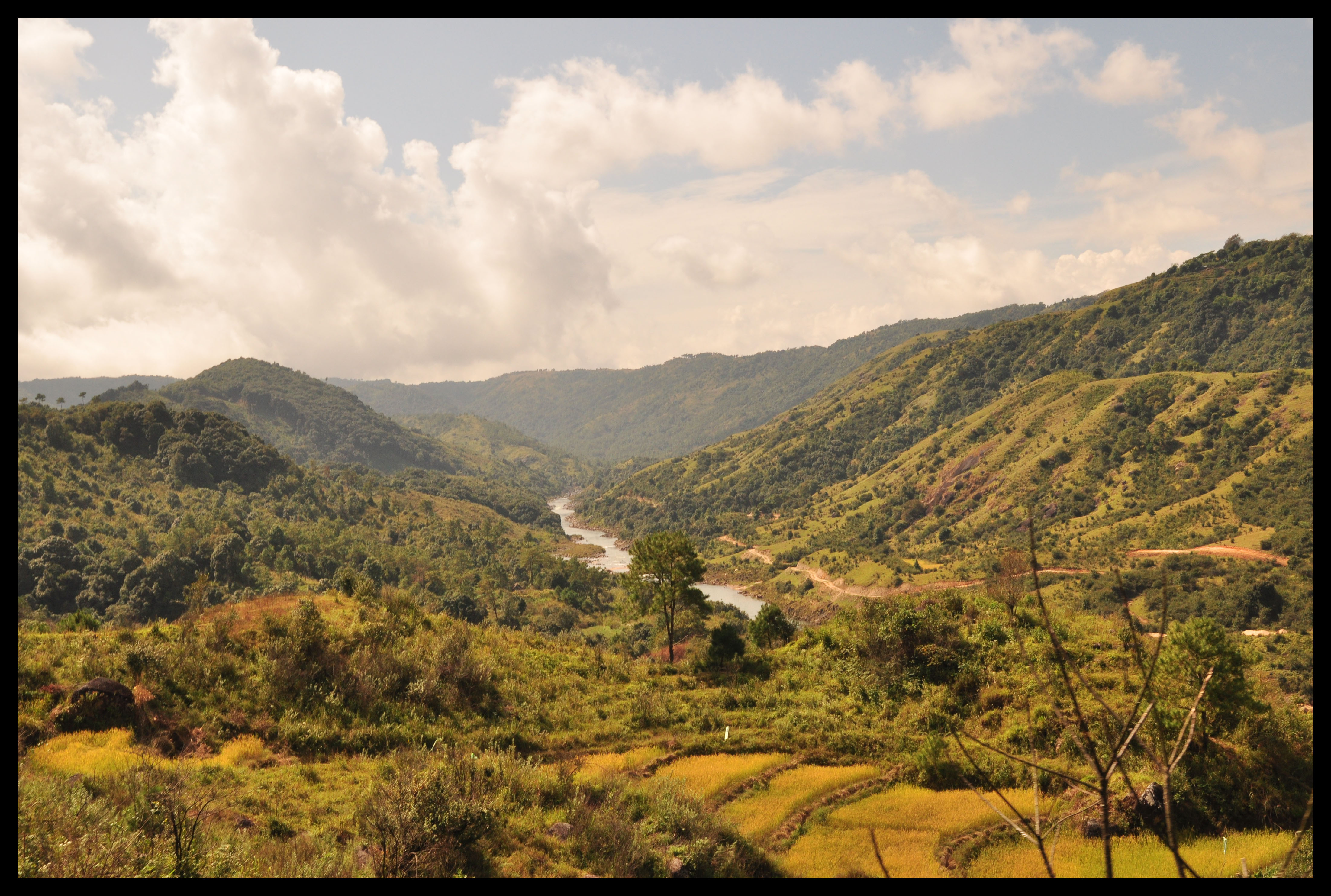
During the cold Delhi winter months of December and January, many winters ago, I read JRR Tolkien‘s ‘The Lord of the Rings‘ for the first time.
Out on my balcony, enjoying whatever sunshine was available, munching on peanuts, I completed this epic in two months. At night (and during the day) I would dream of myself joining the fellowship, climbing over the snowy Misty Mountains, trudging over the Dead Marshes, stumbling into the Fangorn Forest, riding towards Edoras, shivering with fear and sweating from the heat of Mount Doom, crossing the River Anduin and admiring the Pillars of the Kings at Argonath.

For Peter Jackson, choosing New Zealand to shoot his three Tolkien films was logical. He lived in the capital city, Wellington, and his hi-tech digital studios and film company were nearby.
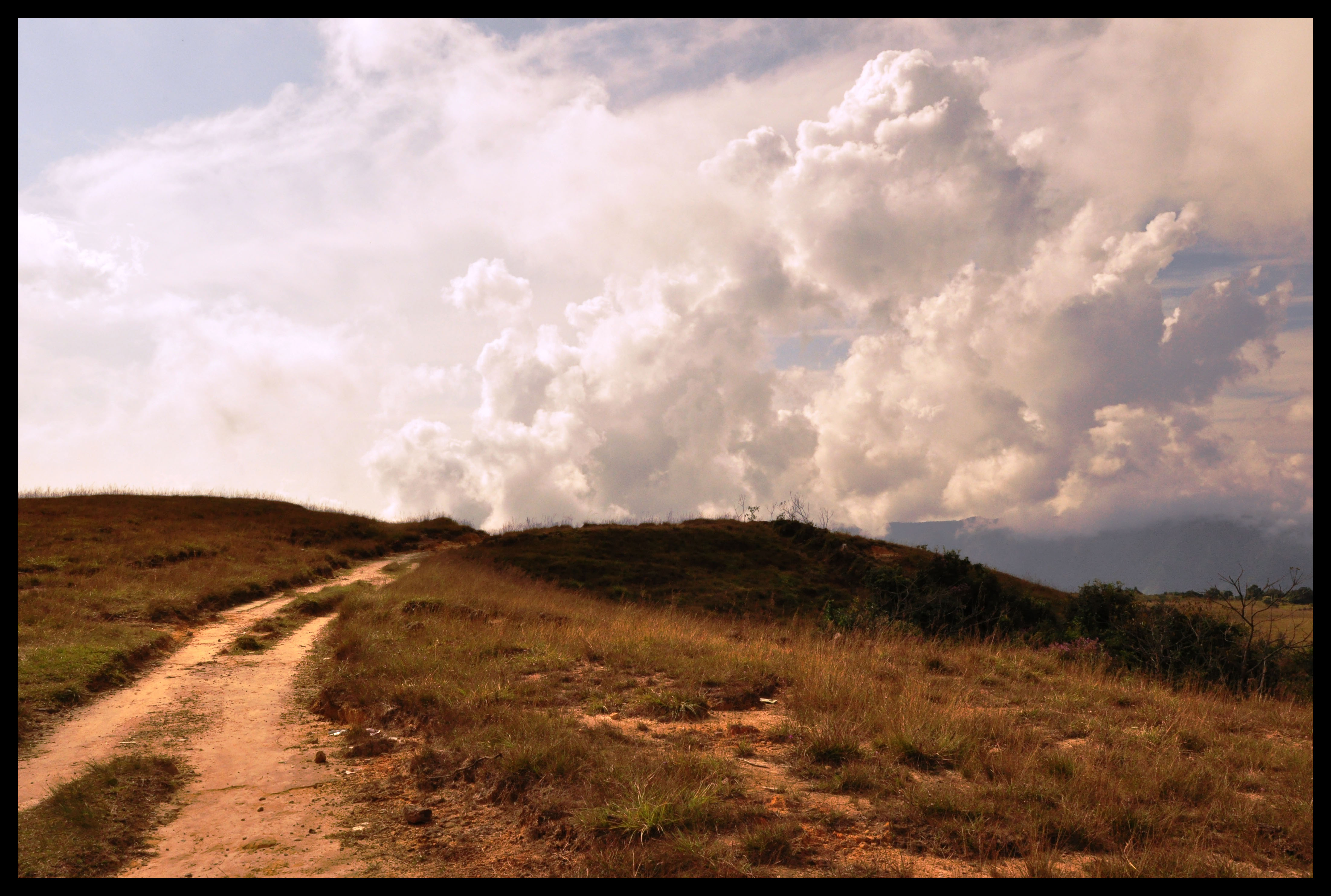
Jackson and his team scoured New Zealand for the most beautiful and diverse areas. The mountains in Glenorchy became the Misty Mountains, rolling hills of Matamata became Hobbiton, while the volcanic region of Mount Ruapehu transformed into the fiery Mount Doom, the forests near the Mavora Lakes became the Fangorn Forests, Mount Sunday was the location for Edoras, and at least four rivers were used to depict the River Anduin.
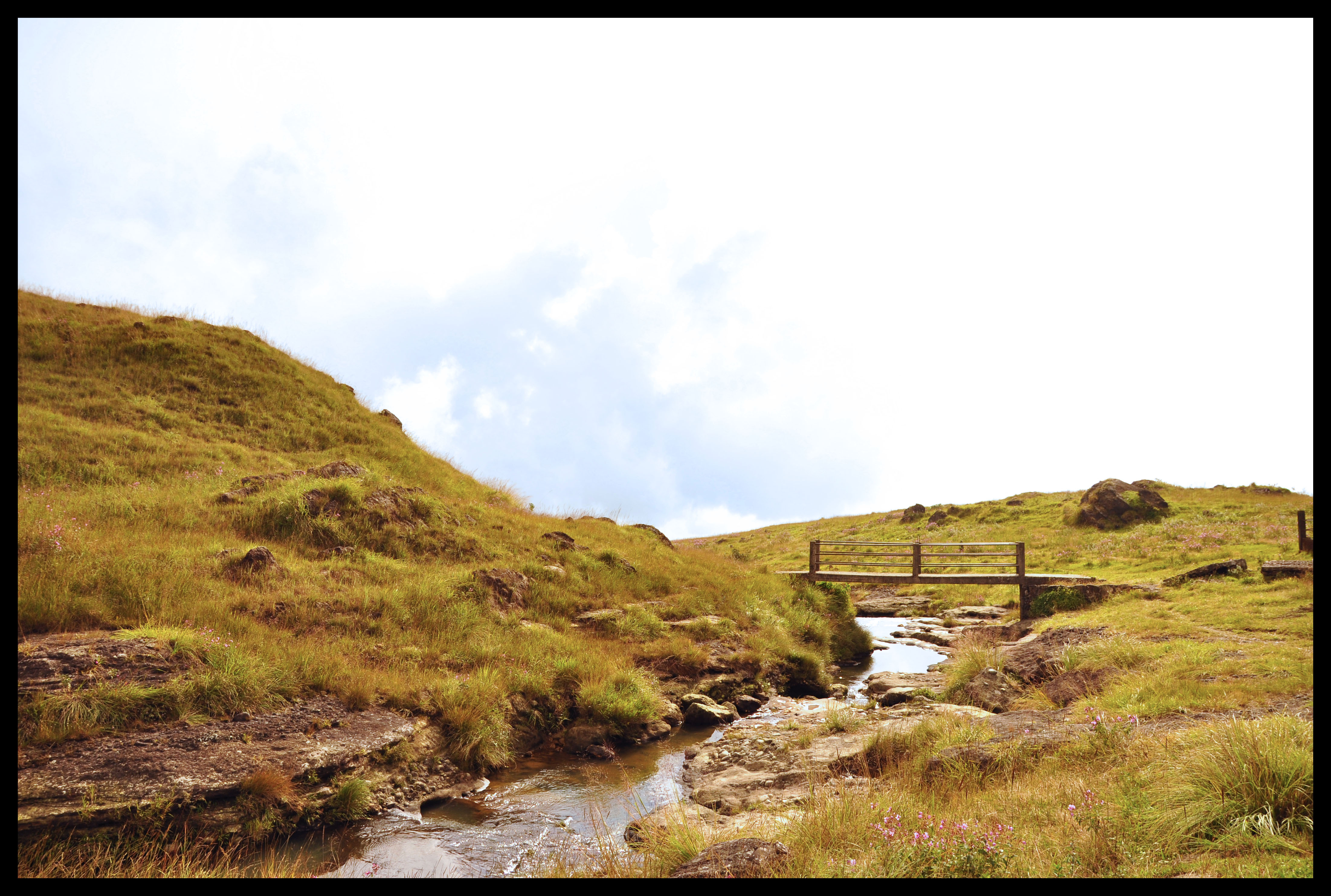
I am sure Peter Jackson has never visited Meghalaya!!! Because if he had, I’m sure he would have found some of his meadows, waterfalls, rivers, forests, and mountains in Meghalaya.
Root bridges of Meghalaya
The living root bridges of Meghalaya are made from the roots of Ficus elastica, the humble Indian rubber tree. The Khasis, an indigenous ethnic group of Meghalaya, took notice of the strength and flexibility of the roots and saw an opportunity to make bridges out of them. The secondary roots hanging from the tree trunks are used to build the bridges.
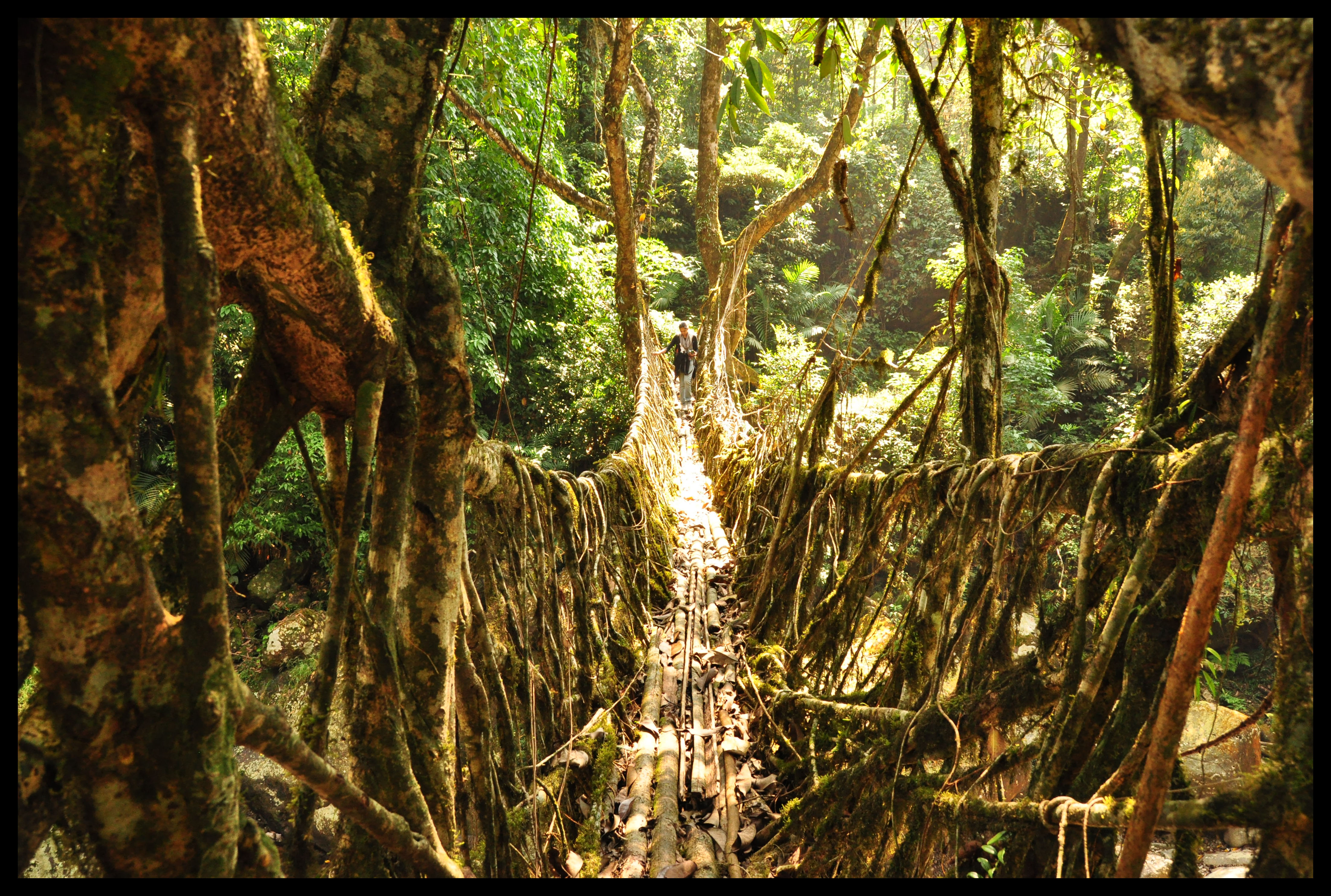
The Khasis use betel nut trunks, sliced down the middle and hollowed out, to prevent the roots from spreading out and growing in the direction needed. When the roots reach the other side of the river, which may even take decades to happen, the root branches are then grown into the soil. The gaps are then filled with stones. The bridges can endure the weight of up to 50 people, and as the bridges are alive – not kicking for sure – and still growing they gain strength over the time. Some of the root bridges are more than a hundred years old.
Now, whenever and wherever the need arises, they simply grow their bridges. Root bridges of Meghalaya – an incredible feat of organic engineering.
In Mawlynnong
Our first sighting of a living root bridge was near Mawlynnong, chosen as the cleanest village in Asia. Garbage bins made of bamboo adorn every nook and corner, highlighting the consciousness towards cleanliness among the villagers.
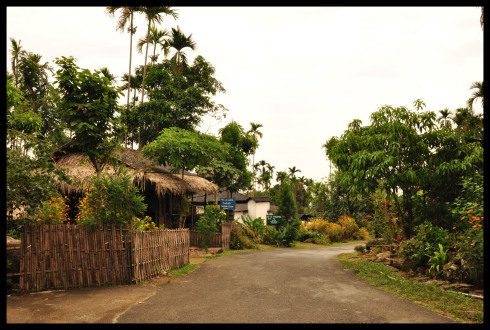
Aesthetics and cleanliness are an age-old tradition and a way of life for the simple folks of Mawlynnong. The village is not just known for its cleanliness and community-based eco-tourism drives but also for the picturesque trek to the living root bridge in Riwai.
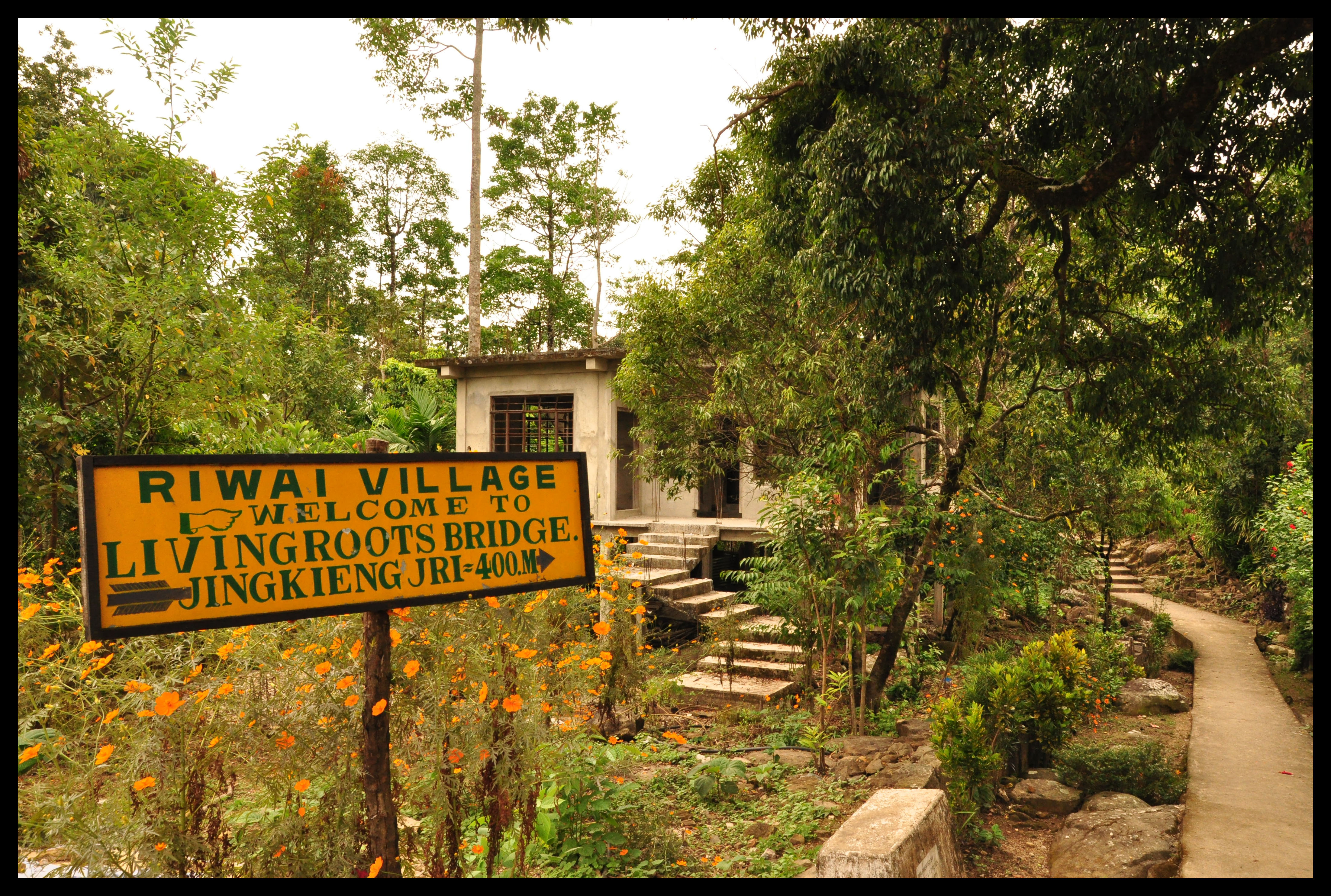
We had started from Shillong, 90 km away, at 8 am in an MTDC bus full of tourists. The scenic drive from Shillong to Mawlynnong offers a spectacular view of changing vistas. The drive from Shillong to Mawlynnong took us through some beautiful landscapes that kept changing with every turn on the road. Dense forests gave way to pretty meadows, hills dotted with multiple waterfalls, the clouds coming down to catch us, it all seemed as if it were a slide show.

Root bridge in Riwai
It was 11.30 when we arrived at Riwai village. We dodged past some village children, trying to sell us fruits like oranges and pineapples, following a cemented path that led to a rocky path down to where everyone was headed.
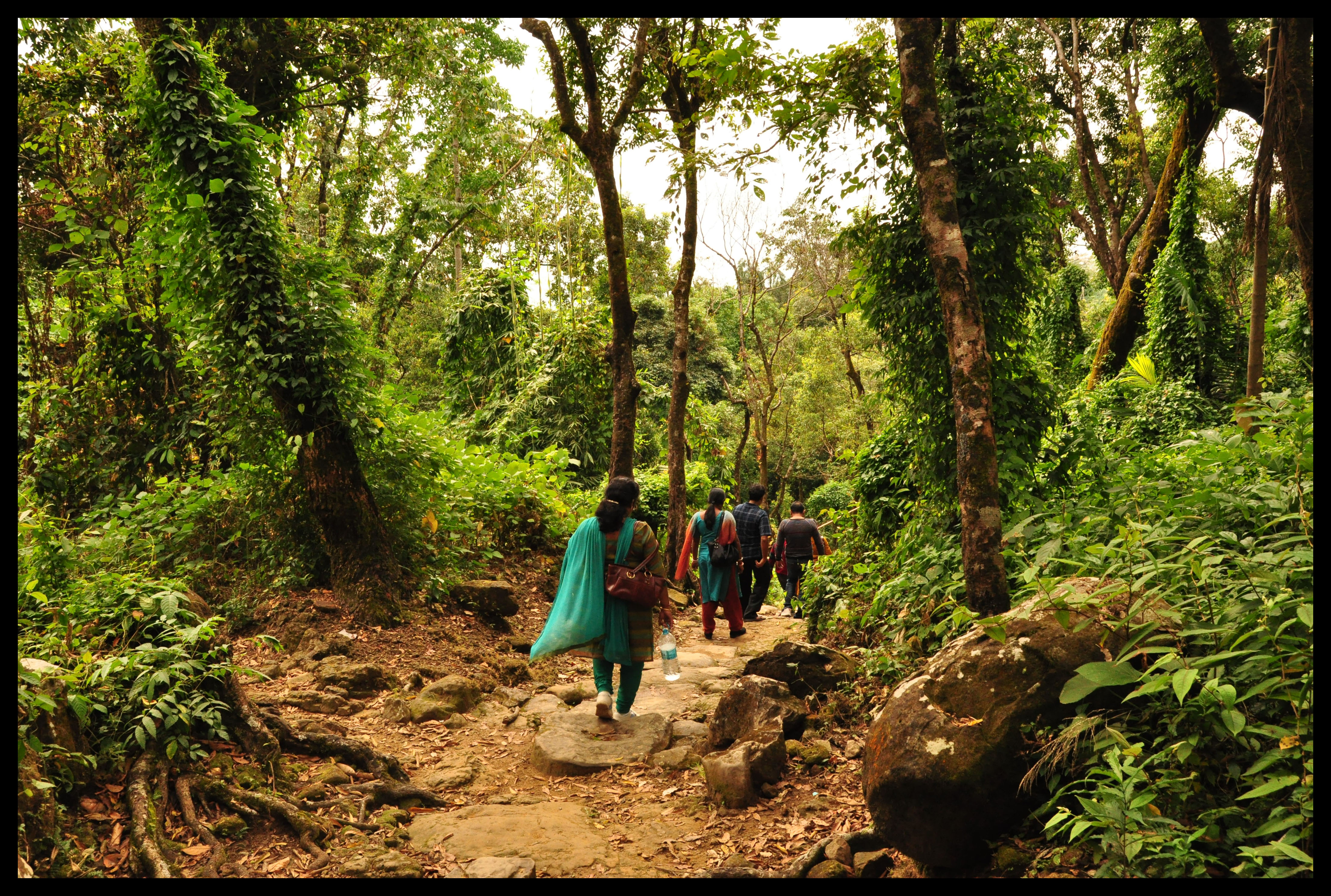
A few minutes later we could hear the soft gushing water from below. It felt like entering a magical land. And there it was. In all its glory, the living root bridge. All the pictures you would have seen, all the descriptions you would have heard about cannot prepare you enough for the sight of a living root bridge.
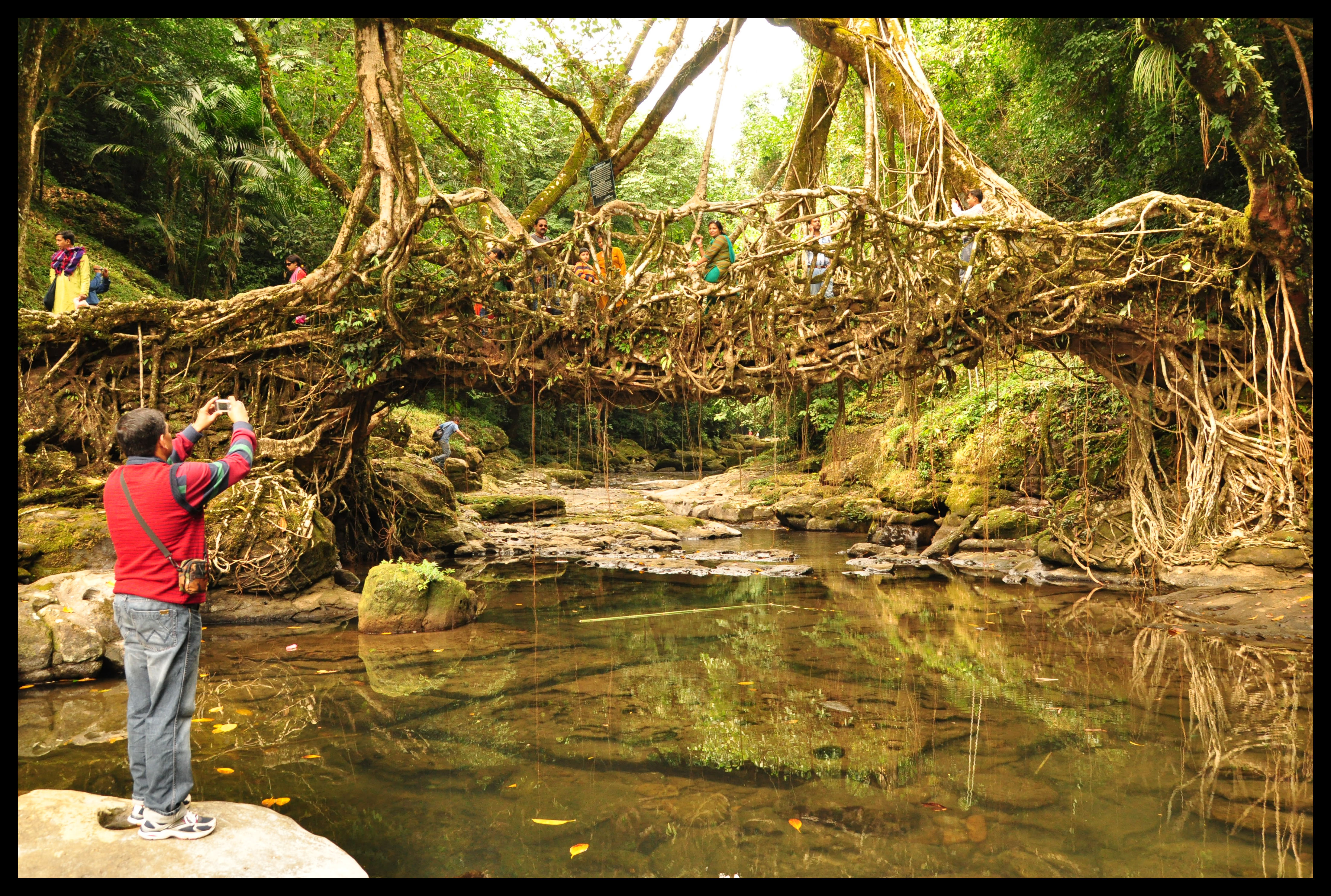
Walking on the root bridge, admiring the knotty roots that were twisted into strong barricades, looking down at the small stream flowing by, time stood still. The only thing that brought us back momentarily was the occasional clicks of the cameras.
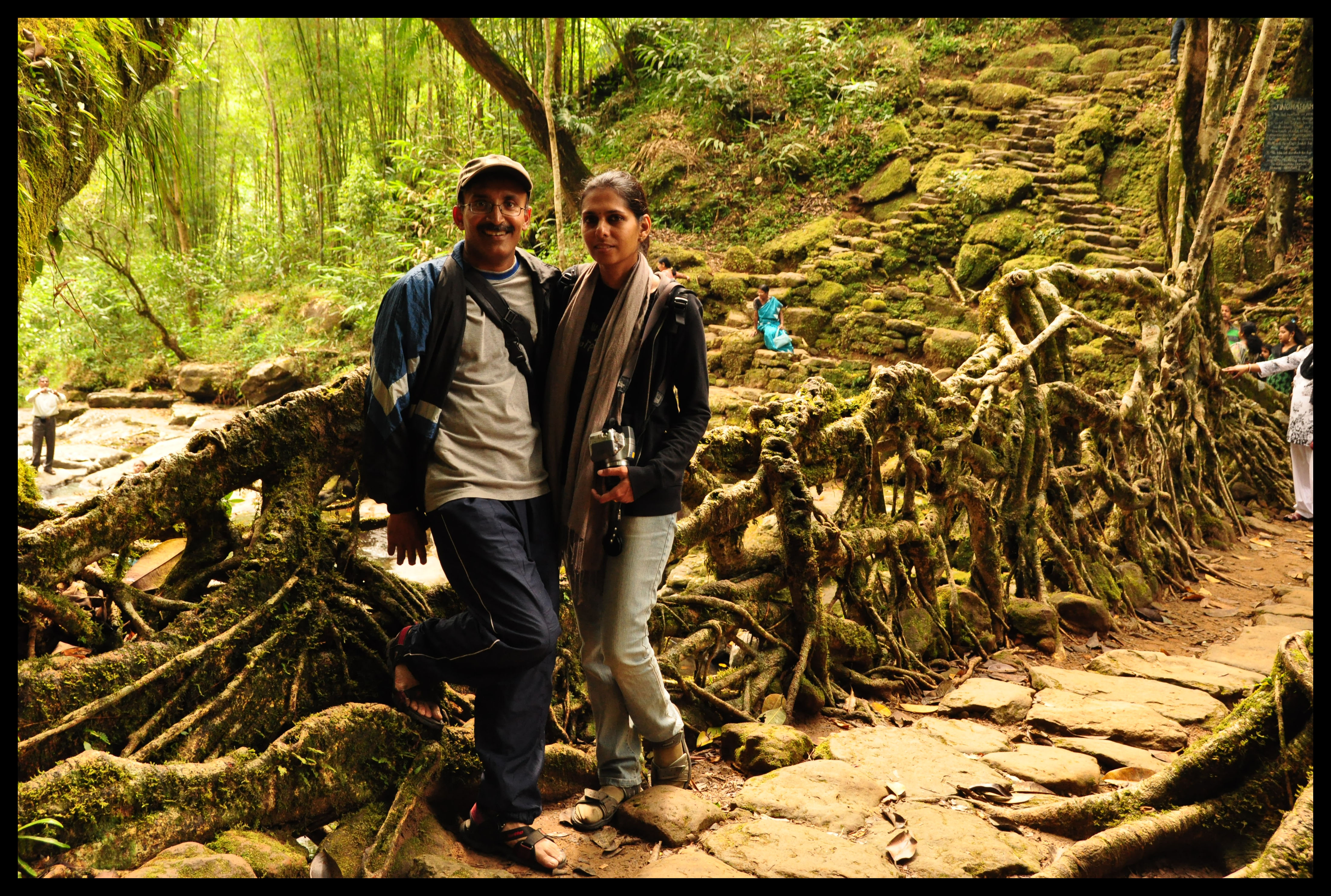
Now I knew that it was true when they said that the root bridges could take the weight of more than 50 people – in other words, 50 tourists complete with their cameras!
Trek to double-decker root bridge
But it would have to be the next outing that was to get us face to face with the superstar of them all – the double-decker root bridge in Nongriat village, better known as Umshiang double-decker root bridge.
About 15 km from Cherrapunji, amongst the thick jungles, lies a treasure.

A cab left us at Tyrna village and a sign showed that the double-decker root bridge was 3 km ahead. A piece of cake, eh?
It was a happy morning, devoid of traffic jams and mobile signals. We followed a cemented path that took us through the small Tyrna village. There were clear markings that told us where we had to go. The cement path came to an abrupt end and we were standing in front of a flight of stone steps.

That was it. 2000 steps and the treasure was ours.
Step after step we climbed down, fully aware that what goes down also has to come up!
The trek was strenuous but the route was enjoyable and the scenery terrific. We could spot distant villages in the jungles on the mountainsides. The constant sound of the crickets was a welcome change from the normal boring sounds of the cities. We passed a few villagers on the way. No wonder, they all looked fit and lean. 2000 steps a day would burn at least 100 calories!! And all of them had this funny look on their face. Well, we were panting and sweating like pigs.
Long Root Bridge
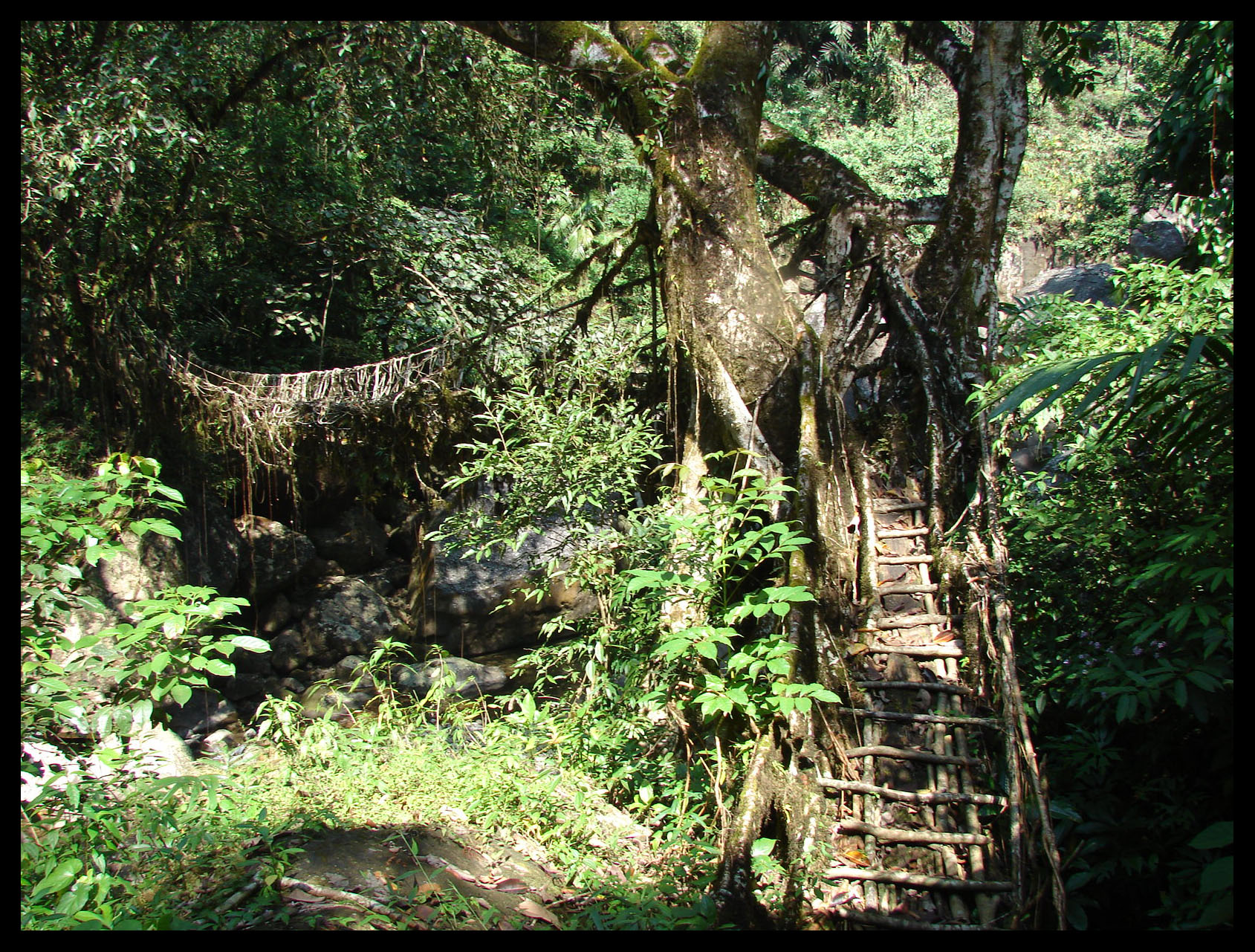
We passed a village called Um-Sophie. Missed the signboard, took the wrong turn but found the right way after barging into a small school and asking for directions. A few more steps later, we were at the Long Root Bridge. Standing alone over a small brook, it had a very creepy look. From the cobwebs seen around, I do not think it had many visitors.
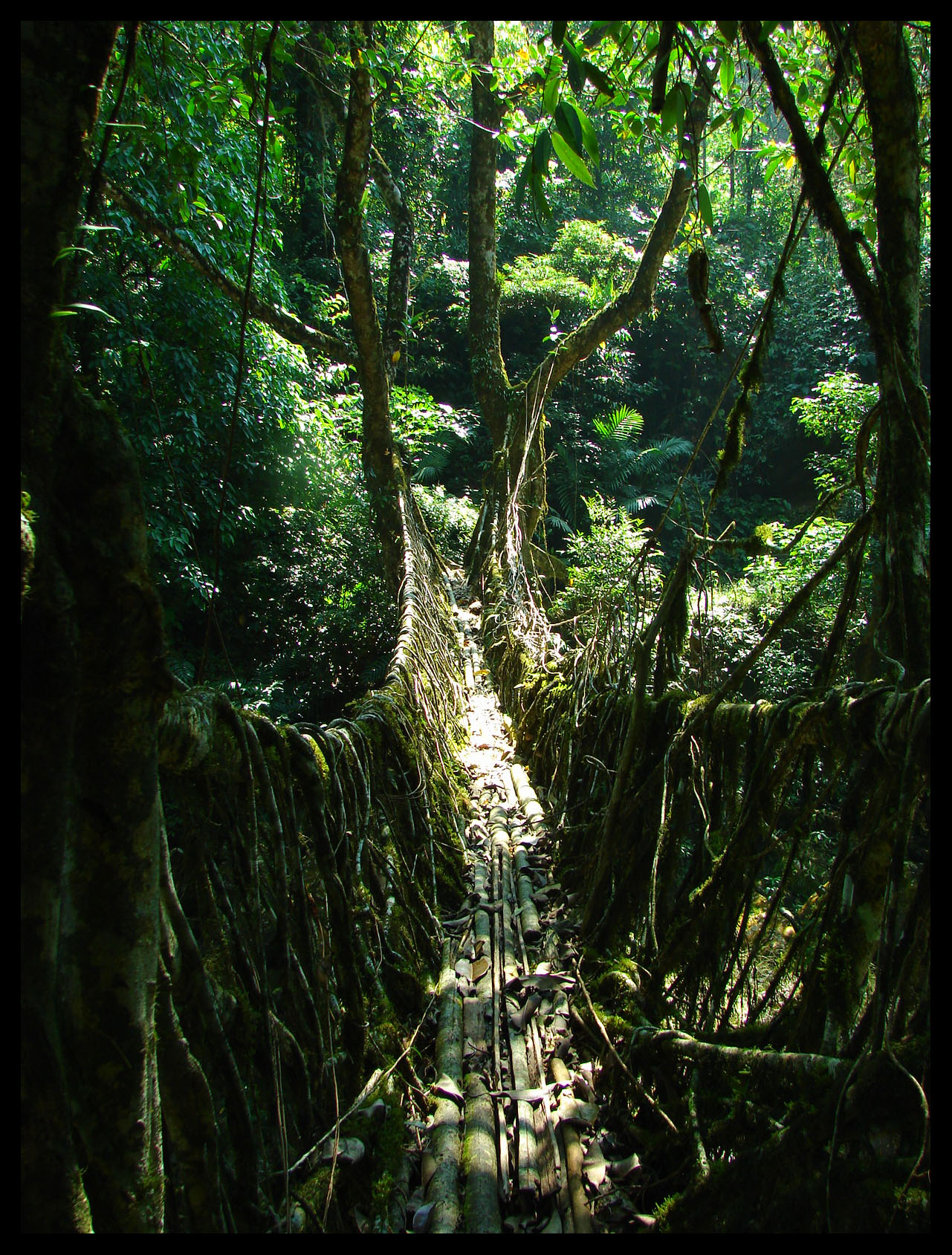
The water was inviting but we had to reach our treasure. A few minutes rest and a quick bite gave us the energy we needed for the next many steps.

We climbed up to the village, now following the right path, and were on our way. Another punishing flight of steps and we were at another bridge – not root this time but iron. The chasm was much wider and a bigger river rushed below. The gentle roll of the bridge, increasing with every additional person who gets on it, and a glance below is not exactly what the faint-hearted would call a holiday experience!
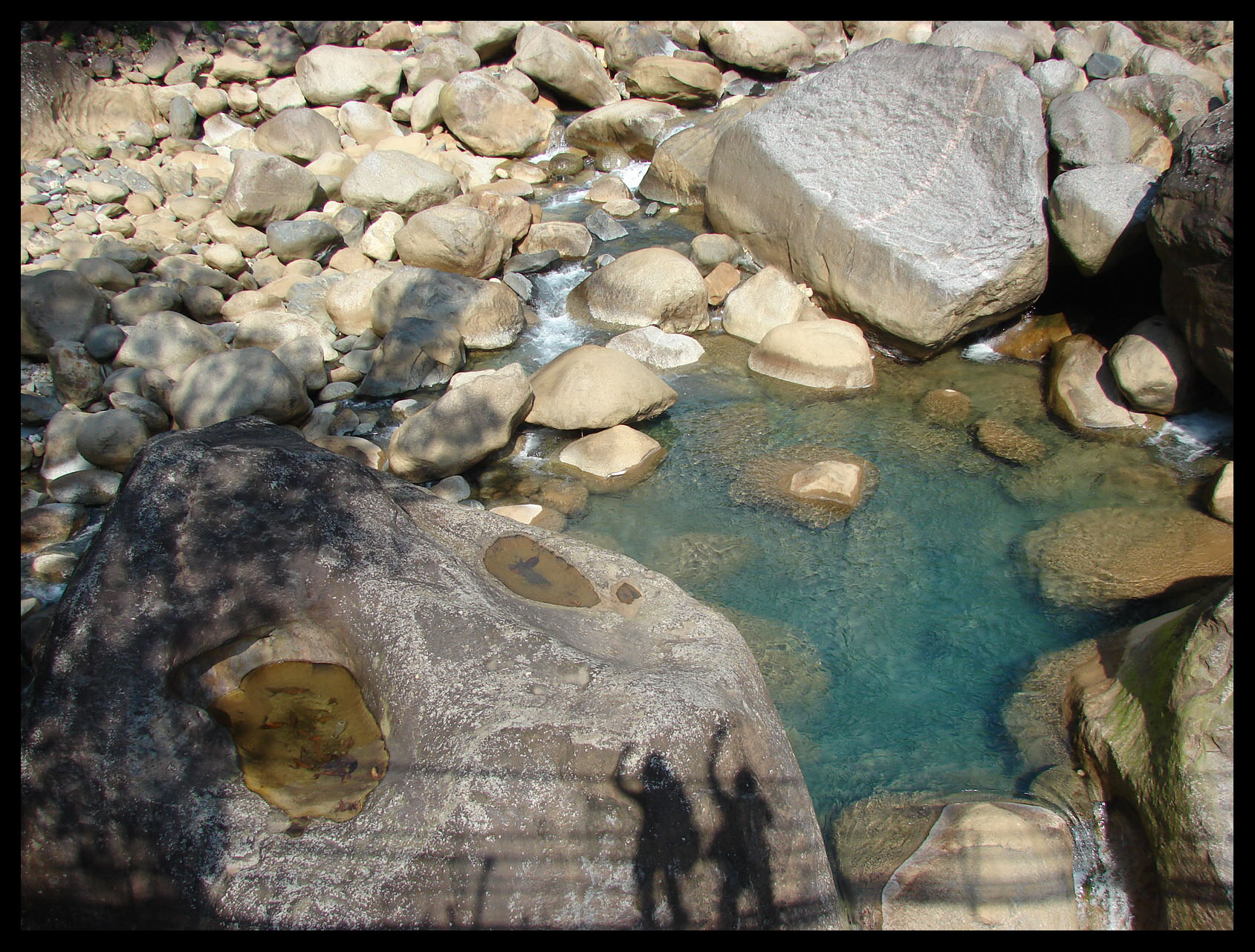
The climb ahead passed through some thick woods, trees enveloping us on all sides. We were happy to capture a few butterflies, always ready for an excuse to take a few breaths. We even saw a snake lounging in the foliage.
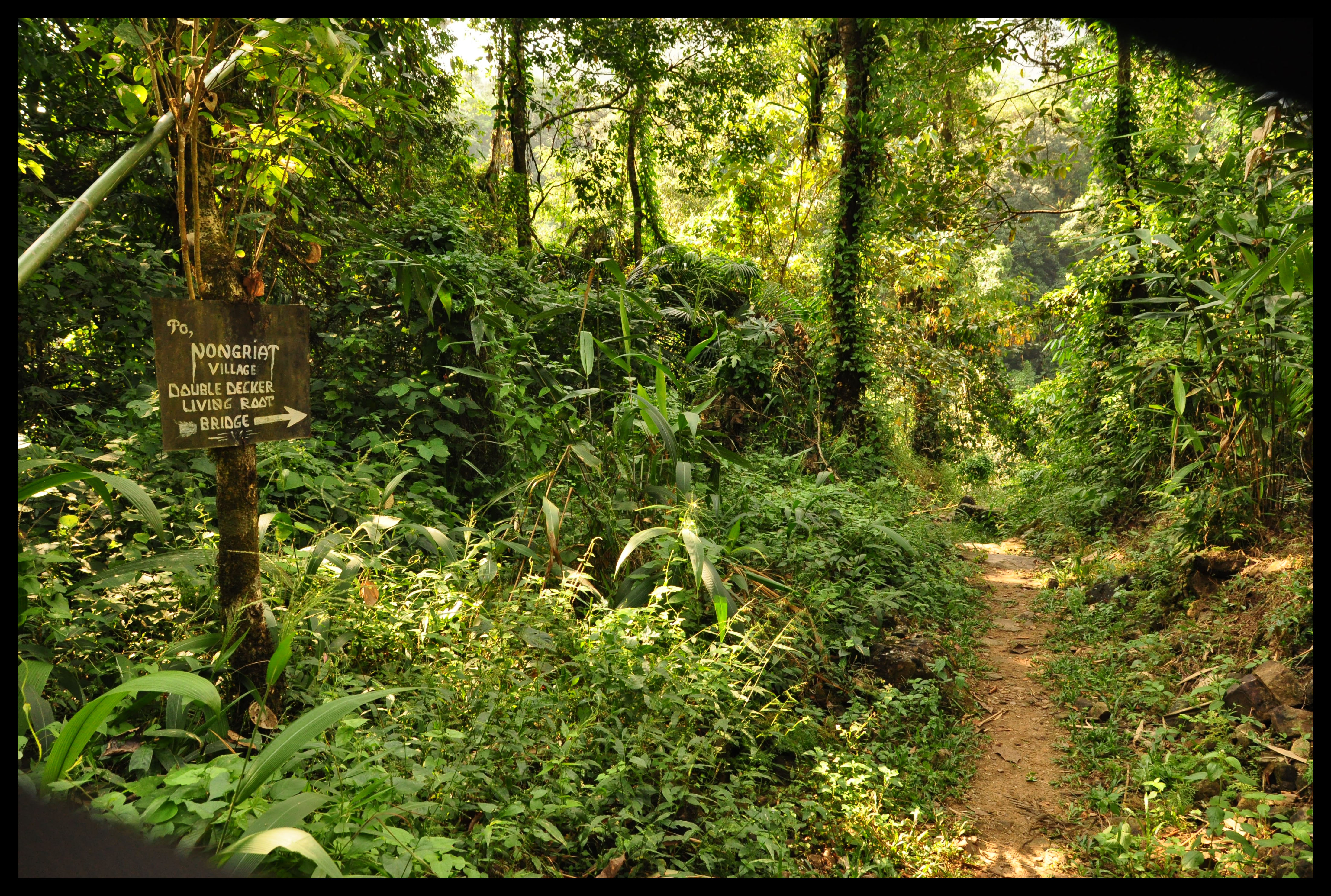
Double-decker root bridge
At the third village, Nongriat, we paid the entrance fee to a village lady, climbed a few steps and then a few down. And stared at what we came all the way to see.
There it was, all two tiers of it, as strong as any iron bridge could be, just right out of one of my dreams.
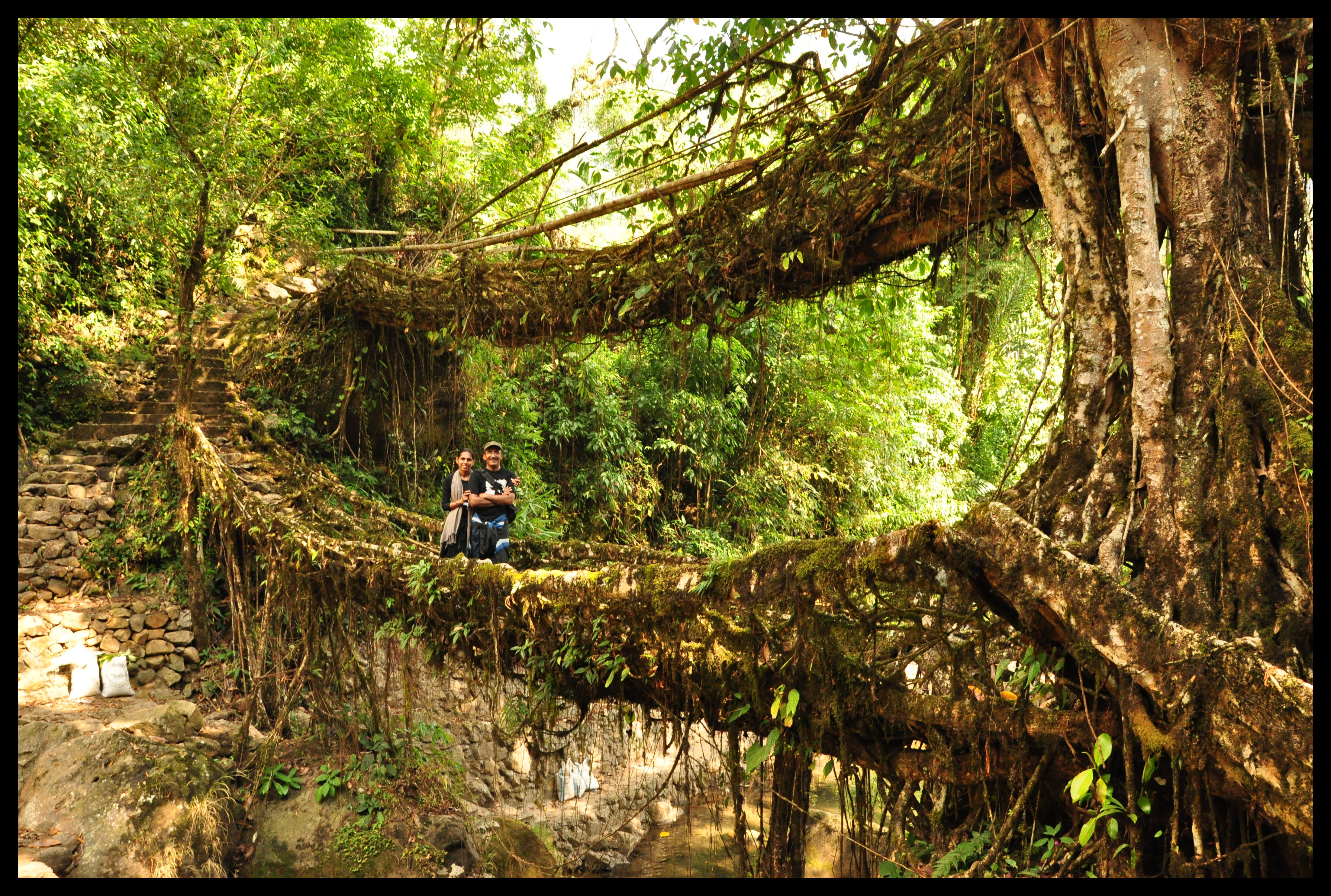
Like the ancient Treebeard, the gnarled tree rose above in a double-decker maze. I was expecting Pippin and Merry to fall off anytime. The double-decker root bridge, our treasure, the pride of Meghalaya. And, more importantly for us, the happy culmination of a grueling trek of over two thousand steps.
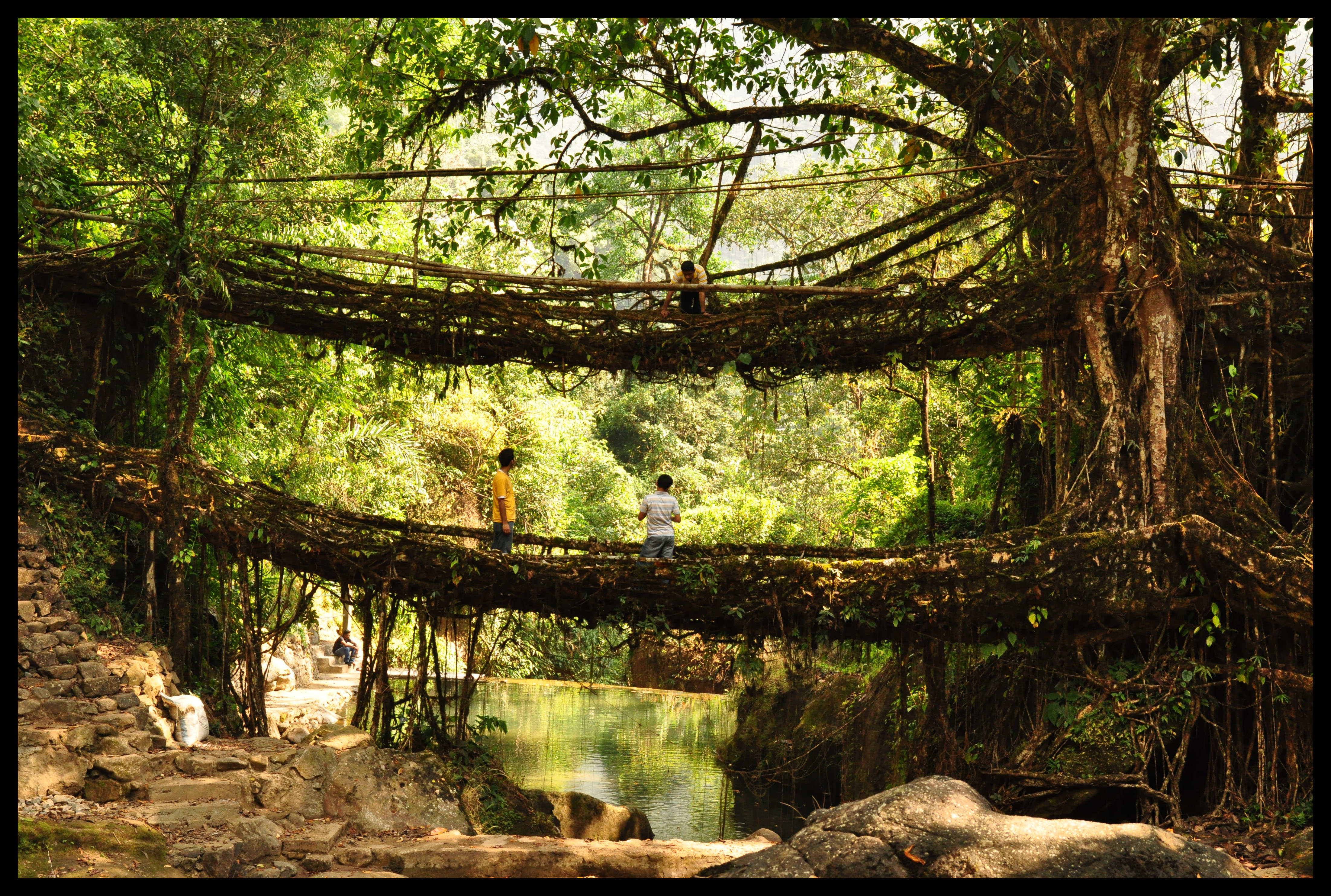
The stream that flowed under was gentle and had made a small pond right for anyone who wanted to take a dip. The greenery made for a great setting and all we heard were the birds and the crickets, and the soothing flow of the brook. We were lucky there was only one other group around, so could spend a full one hour resting our tired limbs and feasting our eyes at the magical view.
I kept looking for Hobbits…. were they hiding somewhere from these crazy camera-wielding tourists?
J.R.R. Tolkien must have been here while writing ‘The Lord Of The Rings’.
And, Peter Jackson surely missed the true spot.


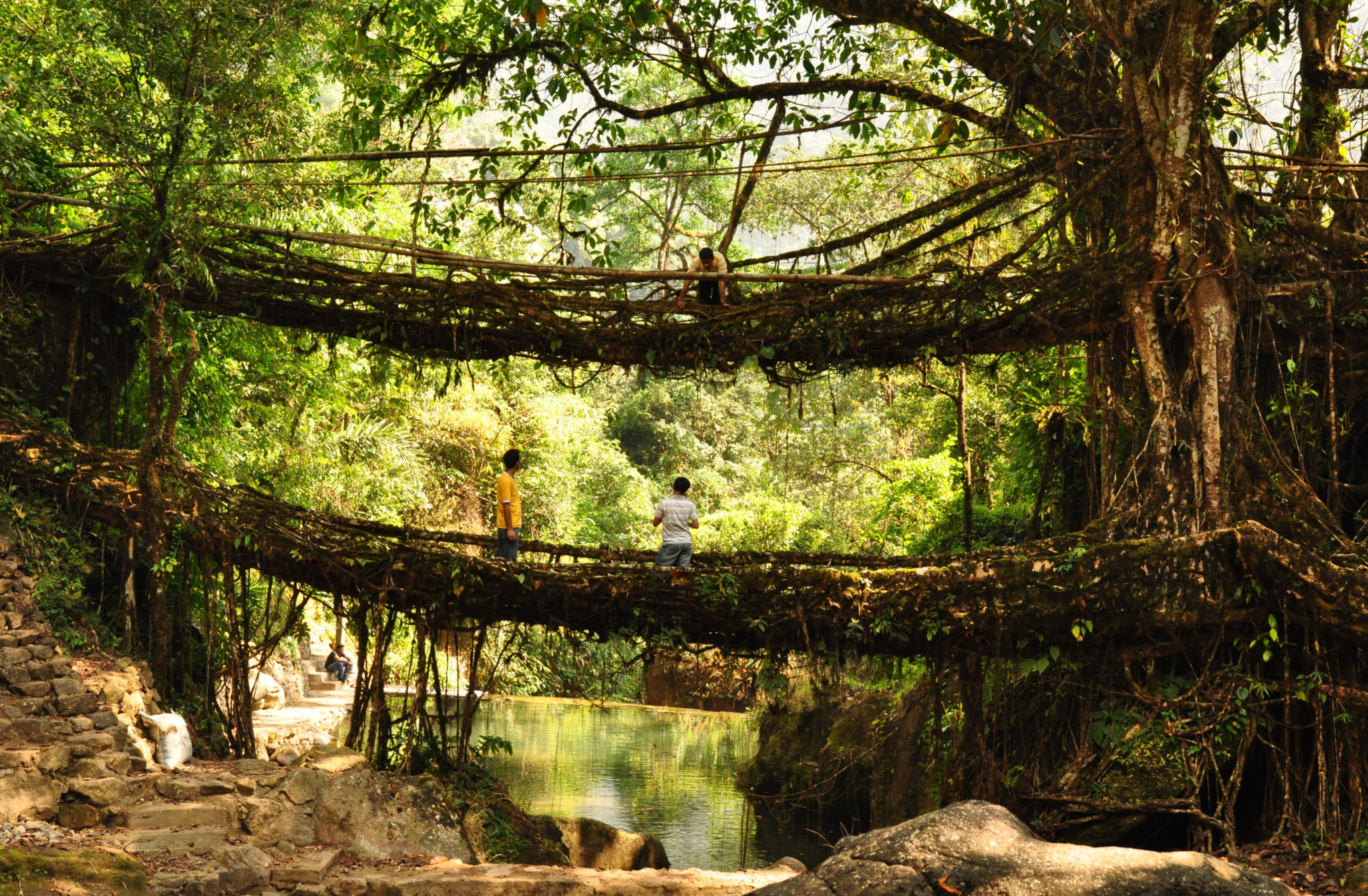



38 Comments
Would love to trod on them some day. Beautiful place. Nice write up.
Keep travelling.
http://www.rajniranjandas.blogspot.com
Thanks Niranjan. It is a lovely place, an unknown treasure. Hope you get to visit it soon 🙂
Nice to know about this place . Its worth a visit and many more .
Yes, it is worth a visit.
Super!!! Each time I keep searching for new words to describe your blog…This is amazing… I dont think that I’d have successfully completed the journey,so, I am happy to have had a virtual tour! Thanks!!!
Thanks Nisha. But it is worth a try. Let those little ones grow up fast and then they’ll carry you over those 2000 steps 😉
Very nice coverage of the living bridge, we missed it despite travelling to Cherrapunji
Thanks Umesh. Oh you couldn’t see the root bridges. There is always a next time 🙂 .
waow..now this is something i had no knowledge about..its absolutely unbelievable..it has such a dreamy fairyland like trait..thanks for sucha lovely, beautiful post
Thanks Sulagna. Yes I know, there are so many unknown treasures in our country that a very few know about. Happy to know that I could impart some information about this place.
Stunning snaps 🙂
places seems like a heaven(neither seen heaven:P) !
–DeepaK
Yes Deepak. If not heaven, at least a magical land. If the snaps look like that, just imagine how the originals were.
it is great is my first impression. I will read the whole piece to give my appreciation.
Thanks Dipak for the comments. I hope you will still like it after going through the whole post.
Beautiful. It will be the next on my travel list. Thanks for sharing. Keep travelling.
Thanks Arun. Hope you get to travel to Meghalaya soon 🙂 .
I live in Colombia (Southameric) and let me tell you that: It’s amazing!! I love this place and I would like to visit it!!
Thanks for your beautiful pics!!
Thanks for your comments, Alexis. I hope you get to visit India and Meghalaya soon 🙂 .
Wonderful landscapes : ) great shots too…
Thanks Firas, and coming from a photographer like you.
Seen this on youtube but never heard a live experience from any, thanks for sharing, a place not to miss!
Its really worth a visit Santosh. Should take a trip to those magical places.
i am going.. 😉 yuppiiee
Have fun Darshan. Swing ’em all.
I had been there 5 years back, but enjoyed a revisit by your vision.. it’s really wonderful..
I think, you didn’t go further Double Decker Bridge.. there are fossils.. I tried to locate them. but the guide seems unaware of it. I would like to revisit this area just to find the fossils..
and the amazing underworld.. yes I mean, caves.. we can visit just one ‘show cave’, but there are more than 1,000 caves in Meghalaya.. The credit goes to Brian Daly, the great explorer of caves in Meghalaya.. He showed light to this hidden world and also fighting to save them from miners.. ( I am fortunate to meet him)..
I hope, you know Timothy Allen, the ‘Human Planet’ famous photographer.. if not, just go through this one-
http://humanplanet.com/timothyallen/2011/03/living-root-bridges-bbc-human-planet/
He is also ‘nature’ly ‘mad’..
its a mad mad world.. isn’t it?
Alhadji
We did not walk from the double decker bridge any further. We also came to know that there was a path from the double decker bridge to Nohkalikai falls. We did visit a touristy cave – Mawsamai cave.
Hey I am Amita Nash, great story, looks and sounds like an awesome spot! I can’t wait till the day I can do some trekking in this mystical, beautiful, peaceful part of India!!!!
Thanks Amita. Pack your bags and head straight away.
Hi Malini, Lovely post there. And I am planning to visit there in December 2013…is it a good time? also how many hours does it take from the start of the trek to the Double Decker bridge…and back? Also do you think I should stay in Cherrapunji or Shillong to be able to visit here?
Cheers! 🙂
Hi Pink Jam
Thanks for those comments.
I guess it should be a good time in December. We visited the place in the month of October (24 Oct 2011, to be precise). It was not cold and it didn’t rain. It could be a bit more colder in December, but I guess that would make the walk even more enjoyable and refreshing. I’m not sure about the rains, because rains in Meghalaya can be unpredictable.
We started around 9.30 in the morning reached the bridge at 12 noon. We did make a few stops in between – at the long bridge and at a natural pool.
We started from the double decker at 1.00 pm and reached back at 3.00 pm. (I have photographic evidence for the start/end times 🙂 )
I would recommend you to stay at Cherrapunji. Shillong is too far away ( 1.30 hour drive, around 50 km) if you would want to start the trek early. We stayed at Halari Restaurant & Lodging, (9862605028, Mr. Bansan Lyngdoh, halari.sohra@gmail.com). It was a 20 min drive from the lodge to the trekking start point.
You could also try Cherrapunji Holiday Resort. Heard very good reviews about the place and it is near the trekking start route.
Hope these points were of some help. If you need more, feel free to write.
how far is the root bridge in riwai village from the umshiang double decker bridge in nongriat village?
Both these villages are on entirely different routes. Nongriat village is near Cherrapunji. For the double decker root bridge trek we stayed in Cherrapunji. To visit the Riwai village root bridge we did a one day trip from Shillong.
nice log!
Thanks Sudersan. Going again this summer 🙂
awesome!!!! Damn, i should say that IS amazing!!! have a good trip!!! 🙂
Thanks